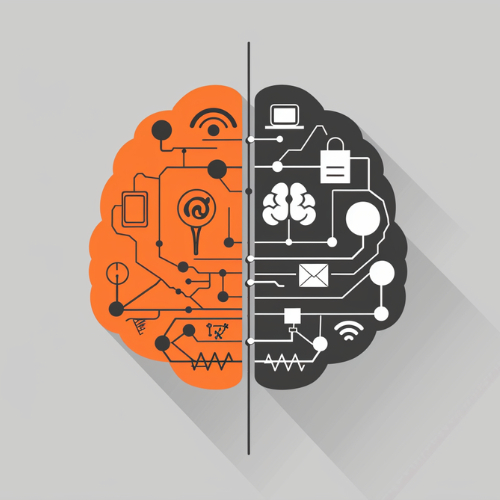
What is a Large Language Model?
At the end of 2022, the world was taken by storm by ChatGPT-3.5, an AI resource that made it easier for people to write, conduct research or even create entire educational courses in just a couple of hours.
Over the months, in 2023, OpenAI, the creators of ChatGPT-3 upgraded this resource to perform tasks more accurately through ChatGPT-3.5 and now ChatGPT-4. You surely might have used or at least tested some of these AI tools.
ChatGPT-3 set of a wave of new launches in the market. Since it was incorporated by Bing by Microsoft, Google decided to provide its own version of an AI resource. Initially, Google named it Bard and in recent months has renamed it Gemini.
While most persons are happy using ChatGPT-3 or its higher versions or Gemini 1.5 or even certain other AI models, they remain blissfully unaware of the technology that powers them or what the category of AI they fall under.
These AI resources broadly come under a category known as Large Language Models or LLM.
This would definitely sound confusing if you’re not a techie or have no knowledge of AI and Machine Learning.
Therefore, I will start by explaining Large Language Models.
Understand What is LLM?
LLM stands for Large Language Model. It’s a type of artificial intelligence (AI) program that can understand and generate human language.
LLMs are trained on massive amounts of text data, which allows them to learn the statistical relationships between words and sentences. This enables them to perform various tasks, such as:
- Generating text: LLMs can create different creative text formats, like poems, code, scripts, musical pieces, emails, letters, etc.
- Translating languages: LLMs can translate text from one language to another.
- Writing different kinds of creative content: They can be used to write different kinds of creative content, like poems, codes, scripts, musical pieces, etc.
- Answering your questions in an informative way: They can answer your questions or prompts as they’re called, in a more informative way. Meaning, that you can get a lot of information that you’re searching for, with a simple and single question.
Overall, LLMs are powerful tools that have the potential to revolutionize the way we interact with computers. And trust me, LLMs are really very powerful. They’re capable of doing lots of tasks within seconds. Humans, on the other hand, would possibly require hours to complete the same tasks.
Tasks LLMs Can Perform
Basically, LLMs can perform a lot of tasks related to human languages, with a blend of Artificial Intelligence. We have to remember that some AI models or AI tools or resources are based on LLMs while others are not. I will discuss these later in this article. But basically, LLMs are revolutionizing the way we interact with computers.
Here are some tasks that LLMs can perform with ease:
- Mimicking Human Language: By analyzing vast amounts of text data, LLMs learn the nuances of human language, including grammar, syntax, and context. This allows them to generate text that is often indistinguishable from human-written content, enabling tasks like:
- Creative Writing: Poems, scripts, musical pieces, and various other forms of creative content can be generated based on prompts or specific styles.
- Code Generation: Some advanced LLMs can even generate and manipulate basic code, assisting programmers in specific tasks.
- Marketing and Content Creation: LLMs effectively draft engaging marketing copy, product descriptions, and other types of content, streamlining the content creation process.
- Breaking Language Barriers: LLMs are pushing the boundaries of translation accuracy and fluency. They can translate text between multiple languages, preserving meaning and context effectively. This fosters global communication and information exchange.
- Unlocking New Levels of User Interaction: LLMs are paving the way for more natural and engaging user interfaces. LLMs power chatbots and virtual assistants that can hold meaningful conversations, understand user intent, and respond accordingly. This enhances the user experience across various applications like customer service, education, and entertainment.
As more and more AI models come into the market, you might be able to find more sophisticated and advanced uses of LLM being deployed. That will surely help you perform more tasks using an LLM powered AI module than what you now have.
Defects of LLM-based AI Modules
At the same time, AI resources with LLMs come with a lot of deficiencies and problems. However, their creators are working to minimize and reduce these deficiencies and problems almost daily to provide better and updated versions to their subscribers.
Here’re some of the snags you could encounter in AIs powered by LLMs.
These include but aren’t limited to:
- Bias & Fairness: LLMs are trained on massive datasets of text and code, which can unintentionally perpetuate existing biases present in that data. It’s crucial to address these biases to ensure fair use in our content.
- Factual Accuracy: While some LLMs prioritize factual accuracy, others might generate outputs that are factually incorrect or misleading. Careful evaluation and critical thinking are necessary when using LLM-generated content.
- Comprehension & Transparency: Understanding how LLMs arrive at their outputs can be challenging. This lack of transparency limits our ability to fully trust their results and raises ethical concerns. We can’t fully trust their outputs since they might favor something.
However, this again is most likely a passing phase. As I mention earlier, creators of LLM-based AI models are working overtime to reduce and eliminate these inherent flaws that seep into their creations. Hence, in future, we might find some AI resources that’re more reliable.
Best Large Language Models
Since we’re now aware of what’s LLM, its uses and drawbacks, let’s look at some of the popular AI models and resources that’re currently in use. Please note that creators of these AI models are engaged in improving their models even as you’re reading this article. Hence, you are assured that in future, the AI resource you’re using now, will most likely provide better performance.
Examples of LLM-based AI resources include:
Jasper
Jasper is an AI writing assistant that uses machine learning to help you write better content, faster. It can help you with a variety of tasks, including generating creative text formats, writing different kinds of content, and translating languages.
ChatGPT by Open AI
Renowned for its ability to generate human-quality text, translate languages, write diverse creative content, and answer questions informatively. Known for its large size and powerful capabilities, but can sometimes generate outputs that are factually incorrect or misleading.
Gemini by Google
Formerly branded as Bard, this LLM-based AI resource is now renamed as Gemini. It generates different creative text formats, translates languages, writes various content, and answers questions informatively. Focused on user interaction and offering comprehensive information in an informative and engaging way.
Jurassic-1 Jumbo by AI21 Labs
A factual language model excelling at answering questions informatively, translating languages, and generating creative text formats. It is particularly strong in factual language understanding and focuses on providing accurate and reliable information.
Megatron-Turing NLG by NVIDIA
Specializes in generating creative text formats while retaining the original content’s style and tone. Developed by NVIDIA, it excels at tasks like writing different kinds of creative content that mimics a specific style or voice.
WuDao 2.0 by BAAI
A Chinese LLM adept at translation, creative content creation, and informative question answering, tailored to the Chinese language and cultural context. Focused on understanding and responding to information within the Chinese language and cultural context.
BLOOM by Allen Institute for Artificial Intelligence
Emphasizes factual language understanding and generation, allowing for informative answers and creative text formats with a focus on accuracy. Developed with a strong emphasis on factual language understanding and aiming for reliable and accurate outputs.
Rytr
Rytr’s features such content generation, style changes, translation, and grammar checking are all core abilities of LLMs. Rytr is particularly good at understanding patterns in language, making them valuable tools for writing-related tasks that makes it a favorite among authors and journalists.
ERNIE 3.0 by Baidu
A Chinese LLM proficient in question answering, translation, and creative text formats, catering to the Chinese language and cultural context. Similar to WuDao 2.0, it focuses on understanding and responding to information within the Chinese language and cultural context.
Writesonic by Samanyou Garg
Writesonic provides a variety of features for content creation, including generating different forms of content like blog posts, website copy, email marketing materials, and even product descriptions. It assists with search engine optimization (SEO) by allowing you to create optimized meta-descriptions and leverage competitor insights for better ranking. Writesonic offers tools for building AI-powered chatbots to help you automate customer interactions.
While these are the top 10 LLM-based AI resources, there’re also several private ones that’re not available to the public or are used by a small group of individuals and companies. There’s no information about these LLM based AI modules available at the time of writing this article.
Wrap Up
It’s worth knowing that LLM isn’t the only technology on which AI models and resources that can perform writing tasks are based. There’re several other technologies and AI resources using those are also equally or more effective than LLM types. Therefore, before subscribing to an AI module or resource, consider your specific needs.












